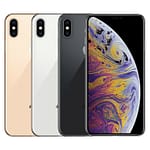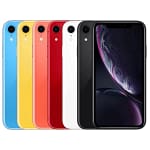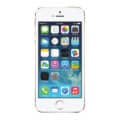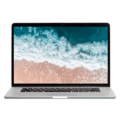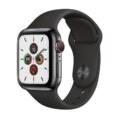- All Apple Devices
- iPhone
- Apple iPhone XS
Apple iPhone XS
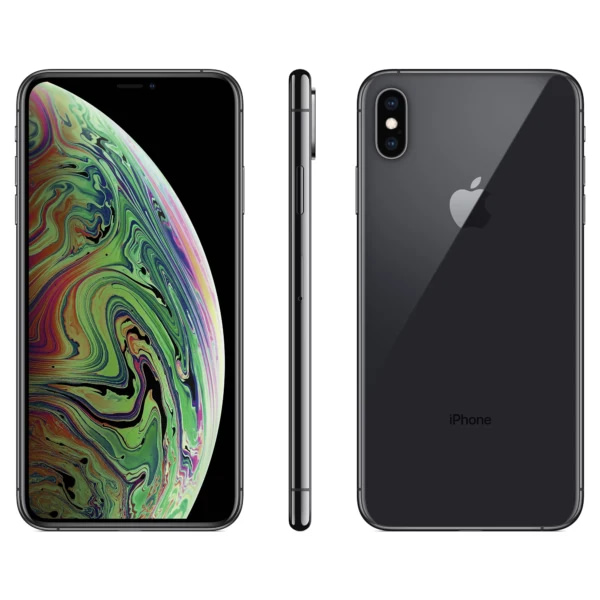

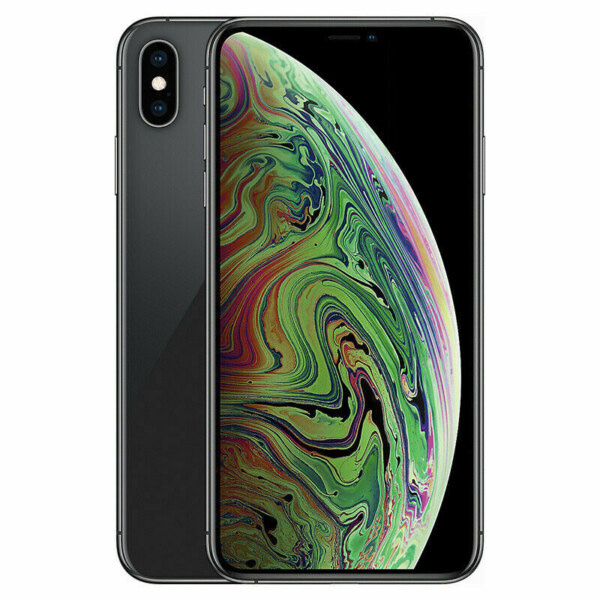
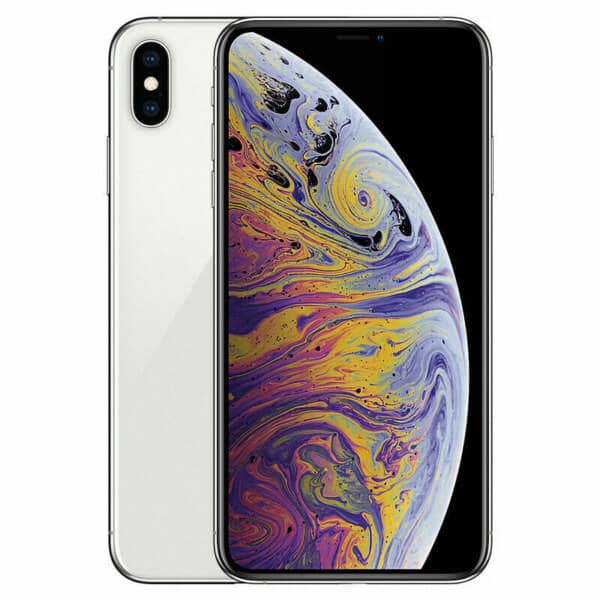

iPhone XS

Product Brand: Apple
Editor's Rating:
4
4
Pros
- Excellent OLED screen display
- Dual-camera system with improved low-light performance
- Water and dust resistant
- Fast and powerful A12 Bionic chip
- Face ID for secure authentication
- Support for wireless charging
- Sleek and stylish design
Cons
- No headphone jack
- Expensive price point
- Battery life is not as good as some other models
- Limited storage options
Apple iPhone XS Specifications
Dimensions: 70.9 x 143.6 x 7.7 mm
Weight: 177 g
SoC: Apple A12 Bionic APL1W81
CPU: 2x 2.5 GHz Vortex, 4x 1.59 GHz Tempest, Cores: 6
GPU: 1100 MHz, Cores: 4
RAM: 4 GB
Storage: 64 GB, 256 GB, 512 GB
Display: 5.8 in, OLED, 1125 x 2436 pixels, 24-bit
Battery: 2658 mAh, Li-Ion
OS: iOS 12
Camera: 12MP 4032 x 3024 pixels, 7MP 3840 x 2160 pixels, 60 fps
SIM card: Nano-SIM
Wi-Fi: a, b, g, n, n 5GHz, ac, Dual-band, Wi-Fi Hotspot
USB: 2.0
Bluetooth: 5.0
Positioning: GPS, A-GPS, GLONASS, Wi-Fi, Cell ID
Full Technical Specifications
General
| Device Type | Smartphone |
| Models |
A2097 (Global market) A1920 (USA, Canada, Puerto Rico, U.S. Virgin Islands) A2100 (China, Hong Kong); A2098 (Japan) A2097, A1920, A2100, A2098, Phone11,2 |
| Announced | 12 September, 2018 |
| Released | 21 September, 2018 |
| Status | Discontinued |
| Predecessor | Apple iPhone X |
| Successor | Apple iPhone 11 Pro / iPhone 11 Pro Max |
| Slogan | Welcome to the big screens. |
| Generation | 12th |
Design
| Type Design Type called form factor refers to a mobile phone's size, shape, and style as well as the layout and position of major components of phone. There are three major form factors seen in mobile phones => bar phones, folding phones and sliding phones. | Bar |
| Lenght | 143.6 mm or 5.65 inches |
| Width |
70.9 mm (millimeters) 7.09 cm (centimeters) 0.233 ft (feet) 2.791 in (inches) |
| Height |
143.6 mm (millimeters) 14.36 cm (centimeters) 0.471 ft (feet) 5.654 in (inches) |
| Thickness |
7.7 mm (millimeters) 0.77 cm (centimeters) 0.025 ft (feet) 0.303 in (inches) |
| Volume |
78.4 cm³ (cubic centimeters) 4.76 in³ (cubic inches) |
| Weight |
177 g (grams) 0.39 lbs (pounds) 6.24 oz (ounces) |
| Protection |
Glass front (Gorilla Glass) Glass back (Gorilla Glass) Stainless steel frame IP68 dust/water resistant (up to 2m for 30 mins) |
| Colors |
Space Gray Silver Gold |
Network
| SIM SIM (Subscriber Identity Module) is a small card that contains mobile network subscriber's account information. This allows the phone using the card to attach to a mobile network. The SIM card is most commonly associated with GSM and UMTS mobile networks. Moving a SIM card from one phone to another allows a subscriber to switch mobile phones without having to contact their mobile network carrier. SIM cards can also be used by a phone to store limited amounts of data, such as phone numbers and text messages. | Nano-SIM and eSIM |
| Number of SIM cards | 1 |
| GSM |
GSM 850 MHz GSM 900 MHz GSM 1800 MHz GSM 1900 MHz |
| CDMA |
CDMA 800 MHz CDMA 1700/2100 MHz CDMA 1900 MHz |
| CDMA2000 |
1xEV-DO Rev. A |
| TD-SCDMA |
TD-SCDMA 1900 MHz TD-SCDMA 2000 MHz |
| UMTS (3G) |
UMTS 850 MHz UMTS 900 MHz UMTS 1700/2100 MHz UMTS 1900 MHz UMTS 2100 MHz |
| LTE (4G) |
LTE-TDD 1900 MHz (B39) LTE-TDD 2300 MHz (B40) LTE-TDD 2500 MHz (B41) LTE-TDD 2600 MHz (B38) LTE 700 MHz Class 13 LTE 700 MHz Class 17 LTE 800 MHz LTE 850 MHz LTE 900 MHz LTE 1700/2100 MHz LTE 1800 MHz LTE 1900 MHz LTE 2100 MHz LTE 2600 MHz LTE 700 MHz (B12) LTE 800 MHz (B18) LTE 800 MHz (B19) LTE 800 MHz (B20) LTE 1900+ MHz (B25) LTE 800 MHz (B26) LTE 700 MHz (B28) LTE 700 MHz de (B29) LTE 2300 MHz (B30) LTE 1700/2100 MHz (B66) LTE 600 MHz (B71) |
Display
| Display Type Display Technology => A number of display technologies and types used in mobile phones => TFT (Thin Film Transistor), IPS (In-Place Switching), OLED (Organic Light Emitting Diode), AMOLED (Active-Matrix Organic Light-Emitting Diode), Super AMOLED (an even advanced version of AMOLED), Resistive Touchscreen (Resistive touchscreens contain two layer of conductive material with a very small gap between them which acts as a resistance), Capacitive Touchsceen (Capacitive touchscreen technology consists of a layer of glass coated with a transparent conductor) | Super Retina HD display OLED(Custom built) Multi‑Touch display Supplied by Samsung Display |
| Size | 5.8 inch |
| Resolution | 1125 x 2436 pixels |
| Aspect Ratio | 19.5:9 ratio |
| Display area | (~82.9% screen-to-body ratio) |
| Pixel Density Pixel Density (PPI) is refers to the concentration of pixels on a particular display, measured in pixels per inch (ppi). Pixel density is calculated by dividing the diagonal pixel resolution of a display by its diagonal size, higher pixel density better display quality. | 458 pixels per inch (PPI) |
| Touch Screen | Multi-touch touchscreen display |
| Display Protection Display Protection => Gorilla Glass is a special alkali-aluminosilicate glass shield with exceptional damage resistance that helps protect mobile displays from scratches, drops, and bumps of everyday use, It is always better to go for a smartphone with Gorilla Glass for that added protection and peace of mind. |
Scratch-resistant glass Oleophobic coating |
| Features |
Capacitive Multi-touch Scratch resistant Super Retina HD display True Tone display Force Touch 120 Hz touch-sensing 1000000:1 contrast ratio 625 cd/m² Oleophobic (lipophobic) coating Dolby Vision HDR10 Wide Color display (P3) |
Media
| Audio File Formats |
AAC (Advanced Audio Coding) AAC+ / aacPlus / HE-AAC v1 AMR / AMR-NB / GSM-AMR (Adaptive Multi-Rate, .amr, .3ga) AMR-WB (Adaptive Multi-Rate Wideband, .awb) eAAC+ / aacPlus v2 / HE-AAC v2 FLAC (Free Lossless Audio Codec, .flac) MIDI MP3 (MPEG-2 Audio Layer II, .mp3) OGG (.ogg, .ogv, .oga, .ogx, .spx, .opus) WMA (Windows Media Audio, .wma) WAV (Waveform Audio File Format, .wav, .wave) AIFF |
| Video File Formats |
3GPP (3rd Generation Partnership Project, .3gp) AVI (Audio Video Interleaved, .avi) H.263 H.264 / MPEG-4 Part 10 / AVC video QuickTime (.mov, .qt) MPEG-4 |
| FM Radio | No |
| Loudspeaker | Yes, Stereo speakers |
| 3.5mm Audio jack | No |
| Audio Features |
Loudspeaker Earpiece Stereo speakers Dolby Digital Plus HAC (M3/T4) - Hearing Aid Compatibility |
Rear/Main Camera
| Number of cameras | 2 |
| Sensor type | CMOS (complementary metal-oxide semiconductor) |
| Main cameras | (12 MP + 12 MP) |
| Ultra-wide lens |
12 MP Aperture: f/1.8 Focal length: 26 mm Pixel size: 1.4 micron Sensor: 1/2.55 inches Apple iSight X (CMOS) Phase autofocus (Dual Pixel) Optical stabilization |
| Telephoto lens |
12 MP Aperture: f/2.4 Focal length: 52 mm Pixel size: 1 micron Sensor: 1/3.4 inches (CMOS) Phase autofocus Optical stabilization |
| Depth lens/LiDAR scanner | No |
| Pixel size |
1.4 µm (micrometers) 0.001400 mm (millimeters) |
| Aperture | f/1.8 |
| Zoom | Optical, 2x |
| Focal length and 35mm equivalent | 28 mm (millimeters) *(35 mm / full frame) |
| Number of lenses | 6 |
| Flash type | Quad-LED |
| Image Resolution |
4032 x 3024 pixels 12.19 MP (megapixels) |
| Video Resolution |
3840 x 2160 pixels 8.29 MP (megapixels) |
| Video FPS | 60 fps (frames per second) |
| Other features |
Autofocus Continuous shooting Digital zoom Optical image stabilization Geotagging Panorama HDR Touch focus Face detection White balance settings ISO settings Exposure compensation Self-timer Scene mode Macro mode RAW Flash type - Quad LED Hybrid IR filter Noise reduction Sapphire crystal glass lens cover 1080p @ 240 fps Secondary rear camera - 12 MP (telephoto) |
| Slow motion | 240 FPS (1080p) |
| 1080p video recording | Up to 60FPS |
| 4K video recording | Up to 60FPS |
| 8K video recording | No |
| Stabilization | Optical |
Front/Selfie Camera
| Number of cameras | 1 |
| Main cameras | 7 megapixels (standard) |
| Sensor type | CMOS BSI (backside illumination) |
| Aperture | f/2.2 |
| Focal length and 35mm equivalent | 32 mm (millimeters) *(35 mm / full frame) |
| Image Resolution |
3088 x 2316 pixels 7.15 MP (megapixels) |
| Video Resolution |
1920 x 1080 pixels 2.07 MP (megapixels) |
| Video FPS | 60 fps (frames per second) |
| Other features | 720p @ 240 fps |
Software
| Operating System OS => Every computer system run on a base software called Operating System (OS). Operating System controls all basic operations of the computer (such as smartphone, PDAs, tablet computers and other handheld devices). The Operating System allows the user to install and run third party applications (apps), apps are used to add new functionality to the device. | iOS 12, upgradable to iOS 15.5 |
| User Interface UI or user interface of a device is the look and feel of the on-screen menu system. How it works, its color scheme, how it responds to button presses, all of these things are part of the user interface. | iPhone OS UI |
Hardware
| Chipset Chipset is a group of integrated circuits designed to perform one or a more dedicated functions, often with real time computing constraints, Popular smartphones are equipped with more advanced embedded chipsets that can do many different tasks depending on their programming. | Apple A12 Bionic APL1W81, M12 motion coprocessor, Neural engine (8-core design) |
| SoC Process Technology | 7 nm (nanometers) |
| CPU CPU (Central Processing Unit) mostly known as processors, CPU processes instructions in order to carry out certain functions that make your device operate properly. Processors are often described as the brain of computers, smartphones and tablets, Smartphones and tablets rely on processors to carry out their every task, Processors are an incredibly important factor in selecting any type of computing device, including your smartphone. | 64-bit Hexa-core (2x2.5 GHz Vortex + 4x1.6 GHz Tempest) |
| CPU bits | 64 bit |
| CPU cores | 6 |
| CPU frequency | 2500 MHz (megahertz) |
| Level 1 cache memory (L1) | 1100 MHz (megahertz) |
| Level 2 cache memory (L2) |
8192 KB (kilobytes) 8 MB (megabytes) |
| GPU GPU (Graphics Processing Unit) is a single-chip processor designed to rapidly manipulate and alter memory to accelerate the creation of images in a frame buffer intended for output to a display, This includes things such as lighting effects, object transformations, and 3D motion. | Apple GPU |
| GPU cores | 4 |
| RAM (Memory) RAM (Random Access Memory) is a type of computer memory that can be accessed randomly, any byte of memory can be accessed without touching the preceding bytes that allows information to be stored and accessed quickly from random locations. RAM is the most common type of memory found in computer systems, smartphones, tablets and other electronic devices. | 4 GB |
| RAM Type | LPDDR4X |
| RAM channels | Double channel |
| Internal Storage Internal Storage is a data storage space (flash memory) mostly used in smartphones, tablets and other electronic devices where operating system, apps, music, photos, videos, files and other user data Is stored. | 64/256/512 GB NVMe |
| Card Slot Memory Card Slot is a special slot for inserting a memory card. Memory cards allow you to expand the phone's built-in memory, A memory card (sometimes called a flash memory card or a storage card) is a small storage medium used to store data such as text, pictures, audio, and video, for use on small, portable or remote computing devices such as mobile phones, mp3 players, digital cameras. | No |
| Sensors Sensors are electronic components that detects and responds to some type of input from the physical environment. The specific input could be light, heat, motion, moisture, pressure and location, The output is generally a signal that is converted to use in computing systems, a location sensor, such as a GPS receiver is able to detect current location of your electronic device. |
Face ID Barometer Three‑axis gyro Accelerometer Proximity sensor Ambient light sensor |
| Modem A modulator-demodulator or modem is a computer hardware device that converts data from a digital format into a format suitable for an analog transmission medium such as telephone or radio. | Intel PMB9955 (XMM7560) |
Connectivity
| Bluetooth Version | 5.0 |
| Bluetooth Features Bluetooth is a wireless communications technology for exchanging data between mobile phones, headsets, computers and other network devices over short distances without wires, Bluetooth technology was primarily designed to support simple wireless networking of personal consumer devices. |
A2DP (Advanced Audio Distribution Profile) LE (Low Energy) |
| Infrared Infrared connectivity is an old wireless technology used to connect two electronic devices. It uses a beam of infrared light to transmit information and so requires direct line of sight and operates only at close range. | No |
| Wi-Fi Wi-Fi is a popular wireless networking technology using radio waves to provide high-speed network connections that allows devices to communicate without cords or cables, Wi-Fi is increasingly becoming the preferred mode of internet connectivity all over the world. |
802.11a (IEEE 802.11a-1999) 802.11b (IEEE 802.11b-1999) 802.11g (IEEE 802.11g-2003) 802.11n (IEEE 802.11n-2009) 802.11n 5GHz 802.11ac (IEEE 802.11ac) Dual band Wi-Fi Hotspot |
| USB | Lightning, USB 2.0 |
| GPS GPS The Global Positioning System is a satellite-based radio navigation system, GPS permits users to determine their position, velocity and the time 24 hours a day, in all weather, anywhere in the world, In order to locate your position, your device or GPS receiver must have a clear view of the sky. |
GPS A-GPS GLONASS Wi-Fi Cell ID |
| NFC NFC (Near field communication) is a set of standards for smartphones and similar devices to establish peer-to-peer radio communications with each other by touching them together or bringing them into proximity, usually no more than a few inch. | |
| HDMI HDMI (High-Definition Multimedia Interface) is a compact audio/video interface for transferring uncompressed video data and compressed or uncompressed digital audio data from a HDMI-compliant source device to a compatible computer monitor, video projector, digital television, or digital audio device. | No |
| Wireless Charging Wireless Charging (Inductive Charging) uses an electromagnetic field to transfer energy between two objects. This is usually done with a charging station. Energy is sent through an inductive coupling to an electrical device, which can then use that energy to charge batteries or run the device. | Yes |
Data
| GPRS GPRS (General Packet Radio Service) is a packet oriented mobile data service on the 2G and 3G cellular communication system's global system for mobile communications (GSM), Generally, GPRS is used for the purpose of wireless data transfer, such as sharing pictures and videos or browsing the Internet via a mobile phone connection. | |
| EDGE EDGE (Enhanced Data GSM Environment) is a wireless network technology generally considered the next step in the 2G network offers data transfer rates up to four times faster than ordinary GSM networks, Generally, EDGE is used for the purpose of wireless data transfer, such as sharing pictures and videos or browsing the Internet via a mobile phone connection. | |
| Speed | HSPA 42.2/5.76 Mbps, LTE-A (4CA) Cat16 1024/150 Mbps, EV-DO Rev.A 3.1 Mbps |
| Web Browser Web Browser => a web browser is a software application used to locate, retrieve and display content on the World Wide Web, including Web pages, images, video and other files, The primary function of a web browser is to render HTML, the code used to design or markup webpages. | (Safari) |
Messaging
| SMS SMS (Short Messaging Service) is a text messaging service component of phone, Web, or mobile communication systems. It uses standardized communications protocols to allow mobile phone devices to exchange short text messages over the networks. | Yes (threaded view) |
| MMS MMS (Multimedia Messaging Service) is a standard way to send messages that include multimedia content (audio clips, video clips and images) to and from mobile phones over wireless networks using the WAP protocol. | |
| Email Email (Electronic Mail) is a system for receiving, sending, and storing electronic messages, Similar to a letter, email is text messages that may contain files, images, or other attachments sent via the internet to a recipient by using applications and software prograps. An email address is required to receive email, and that address is unique to the user. | Yes |
| IM IM (Instant Messaging) is an exchange of text messages through a software application, it enable you to create a kind of private chat room with another individual in order to communicate in real time over the Internet. | Yes |
Battery or Power
| Battery Type Battery Type => Cell phones run on various kinds of batteries depending on the manufacturer, phone size or shape and features. There are basically four types of cell phone batteries => Lithium Polymer, Lithium Ion, Nickel Metal Hydride and Nickel Cadmium. | Li-Ion (Lithium Ion) |
| Capacity Battery Capacity is a measure (typically in Amp-hr) of the charge stored by the battery, and is determined by the mass of active material contained in the battery. The battery capacity represents the maximum amount of energy that can be extracted from the battery under certain conditions. | 2658 mAh (10.13 Wh) |
| Charging Features |
Fast charging 15W, 50% in 30 min (advertised) USB Power Delivery 2.0 Qi wireless charging |
| Placement | Non-removable |
Prices (Prices are estimated and varies by capacity)
| Price in (USA) $ | US$240.00 |
| Price in (Bangladesh)৳ | BDT. 90,000 |
| Price in (Canada) | US$689.00 |
| Price in (Dubai/UAE) د.إ | AED 1,450.00 - AED 2,999.00 |
| Price in (India) ₹ | ₹62,998.00 - ₹89,899.00 |
| Price in (Iraq) ع.د | IQD 1,312,540 |
| Price in (Nigeria) ₦ | NGN 263,494 |
| Price in (Tanzania) TSh | TZS 2,500,000.00 |
| Price in Australia | A$599.00 |
| Price in France | FRF 3,764 |
Disclaimer Note
We can not guarantee that the information on this page is 101% correct.

